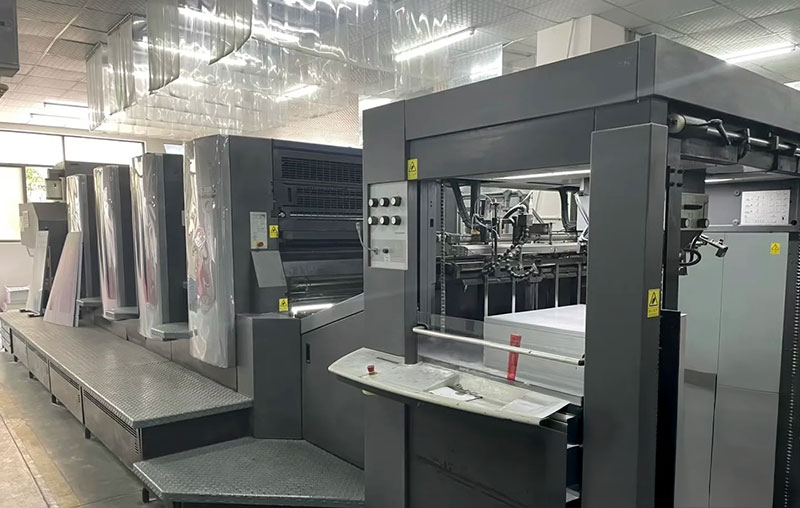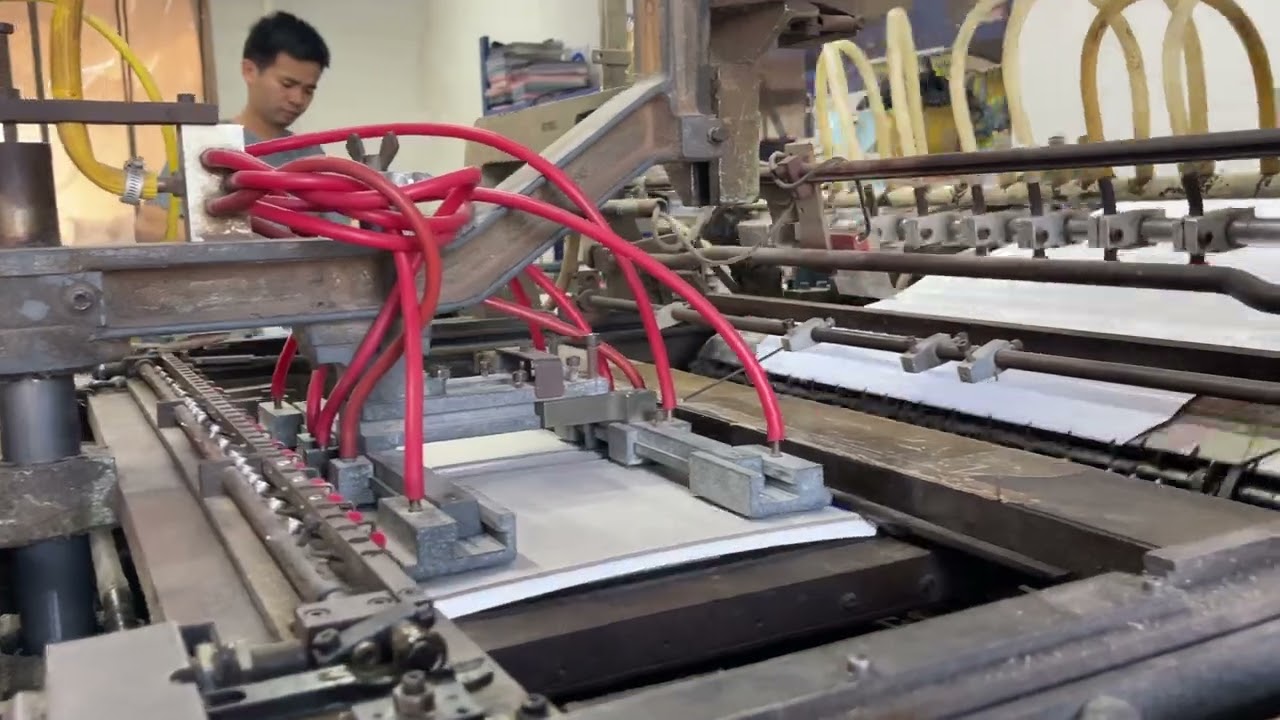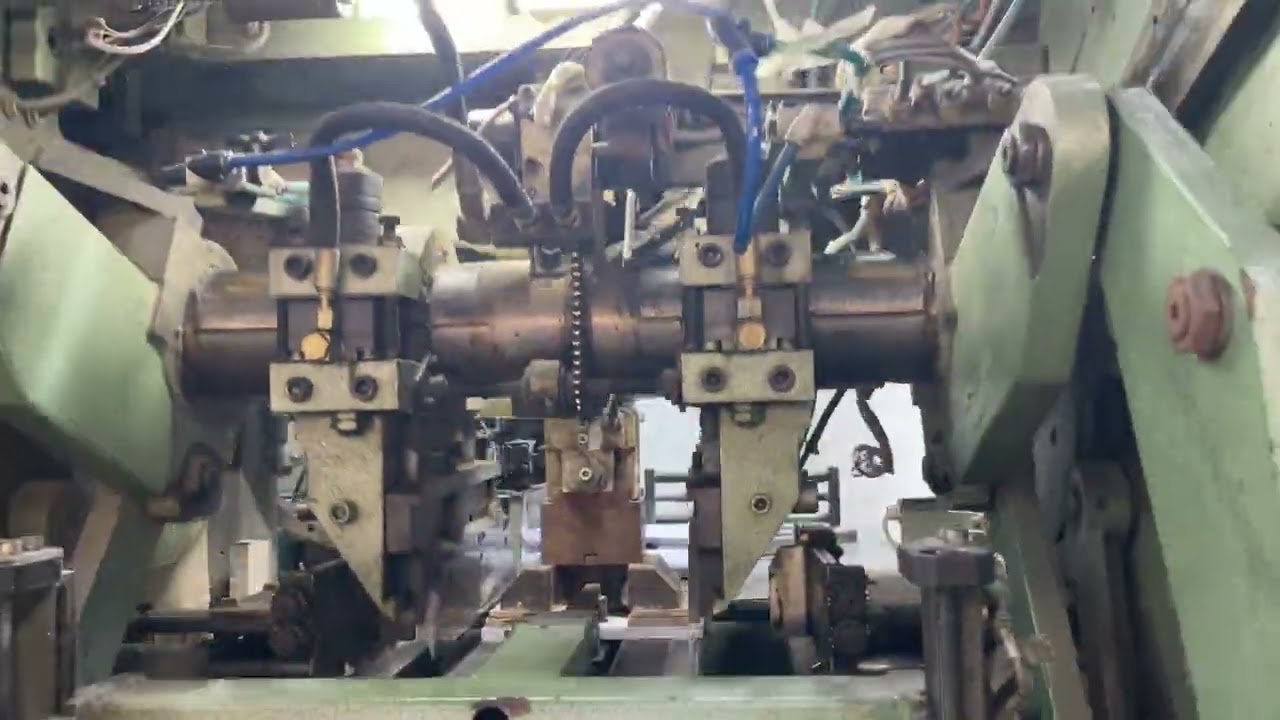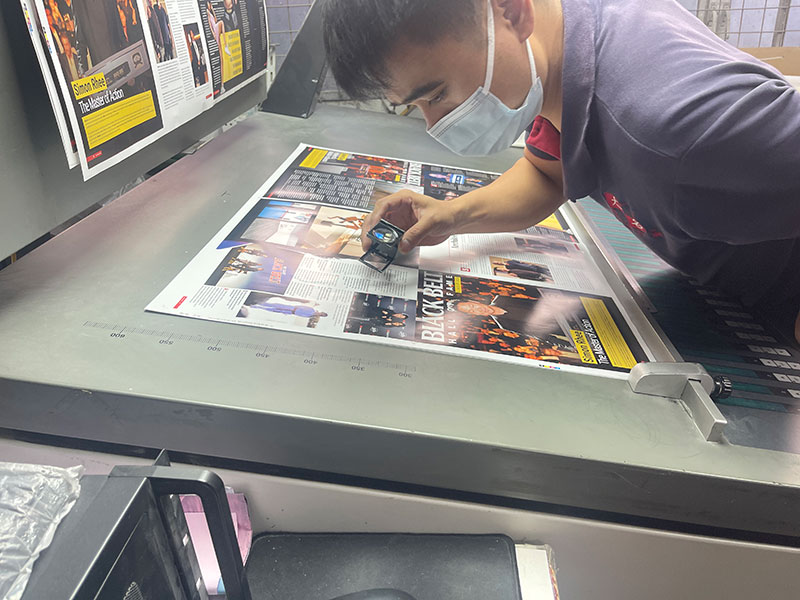Behind the Scenes of Our Art Book Production Line
We’d like to take you through the process of creating art books with the Heidelberg Speedmaster press and a dedicated production line, highlighting the machines and steps we use.
Why We Choose the Heidelberg Speedmaster
We produce every art book orders using the Heidelberg Speedmaster Offset Press. This is the industry’s leading choice for commercial printing. It delivers exceptional quality, with vibrant colors, precise details, and consistent results across every page of your book.
Some printers carry Komori Lithrone, which offers reliable performance, or the HP Indigo, a solid option for digital short runs. However, neither matches the Speedmaster’s ability to elevate your art into a premium, professional product. It’s go to press for for the job, period.

Our Dedicated Production Line
At our factory, we’ve set up a dedicated production line just for crafting premium art books. This includes the main components of a book, such as the hardcover casing, sewn book block, and gluing. When you order 250 copies or more, which is also our minimum for art books, your project runs on this specialized line. This ensures more reliable, consistent book construction, so every copy meets the highest standard possible.


Quality Control
In here, we take quality seriously. After printing on the Heidelberg Speedmaster, we inspect the printed sheet for color accuracy and clarity. In a calibrated light booth, our team uses a printer’s loupe to examine the pages up close. We follow a detailed checklist, such as verifying if the colors match our expectations and if the CMYK plates line up precisely. If we spot a misaligned image, faint scratch, or ink smudge, that set of pages gets flagged for reprinting.

Once the book construction is complete, our team tests the spine by hand, opening books to check if the pages lie flat and the stitching holds firm. For hardcovers, we ensure the casing fits properly, watching for any warping or loose edges.
Before shipping, we flip through sample copies. We go thru about 5-10% of a order, like 25 books from a 250-copy run. We’re looking at alignment, glue consistency, and the over all quality. If something’s off, we pull that copy and figure out why it happened. Manufacturing isn’t perfect every time, no one can promise that; but we’ve got procedures in place to catch issues early and make sure every book comes out as good as it can be.
